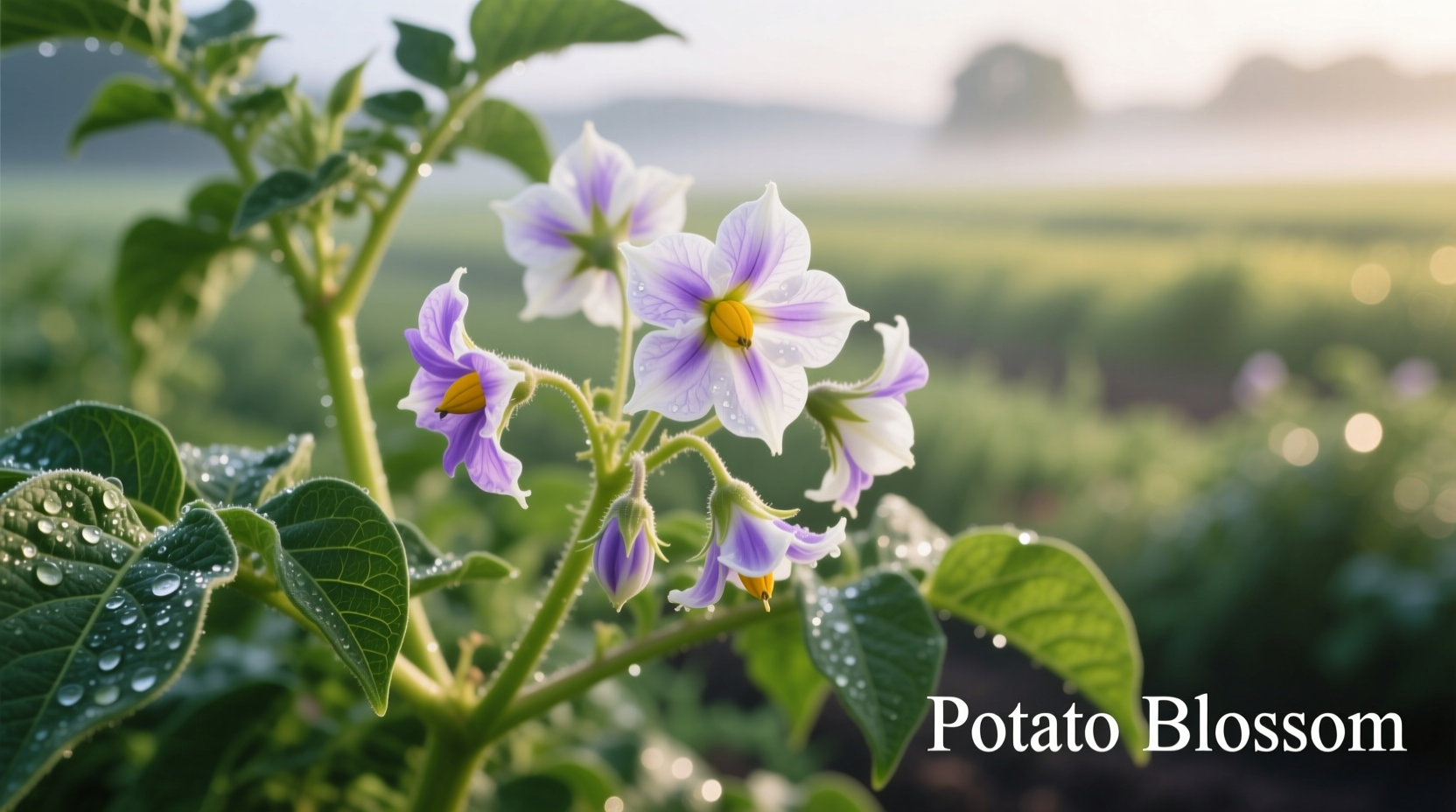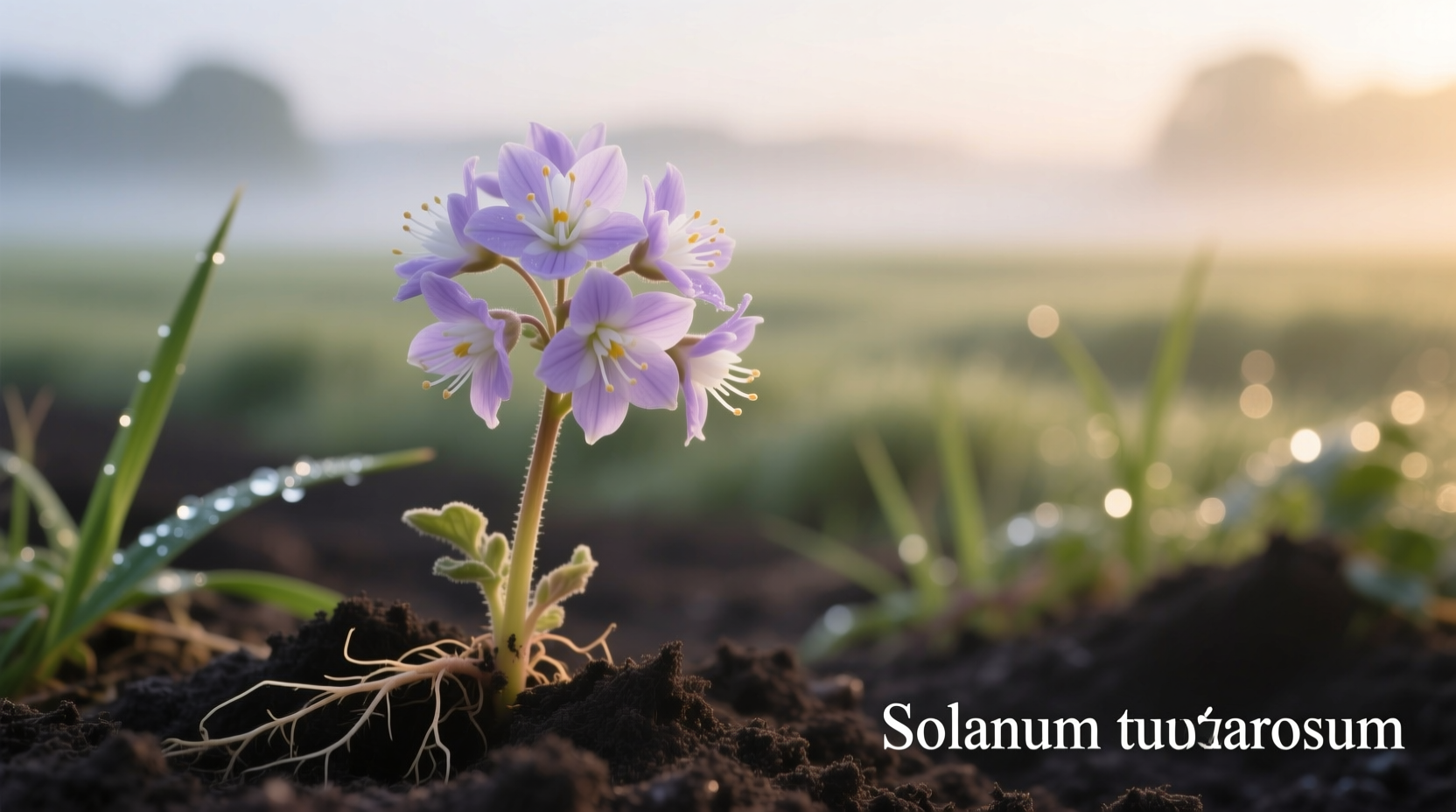Contrary to popular belief, potato flowers don't develop into the tubers we harvest. These blooms signal plant maturity but aren't required for potato formation. While visually appealing, both flowers and green plant parts contain toxic glycoalkaloids like solanine, making them unsafe for consumption.
Have you spotted delicate blossoms on your potato plants and wondered what they mean for your harvest? Understanding potato flowers unlocks valuable insights for gardeners seeking optimal yields while avoiding common pitfalls. This guide separates botanical fact from gardening fiction, helping you make informed decisions about your potato crop.
What Potato Flowers Actually Look Like
Potato plants (Solanum tuberosum) produce distinctive five-petaled flowers that range from white to pink, purple, or lavender depending on the variety. These blooms typically appear 40-60 days after planting when the plant reaches 6-12 inches in height. Unlike fruit-bearing plants, potato flowers don't transform into the edible tubers underground—they're simply a sign of plant development.
Not all potato varieties flower consistently. Some heirloom types like 'Yukon Gold' produce abundant blooms, while others such as 'Russet Burbank' rarely flower. This variation doesn't indicate poor health or reduced yield potential. The University of Minnesota Extension confirms that tuber development occurs independently of flowering through specialized underground stem structures called stolons.

Common Misconceptions About Potato Blooms
Many gardeners mistakenly believe that potato flowers directly produce the tubers we harvest. This confusion likely stems from observing flowers coinciding with tuber formation. However, agricultural research from Cornell University demonstrates that tubers develop from modified underground stems, completely separate from the flowering process.
| Myth | Reality | Scientific Explanation |
|---|---|---|
| Flowers turn into potatoes | Flowers and tubers develop separately | Tubers form from stolons; flowers serve reproductive purpose |
| No flowers = no potatoes | Many high-yield varieties rarely flower | Flowering isn't required for tuber development |
| Flowers indicate harvest time | Flowers signal early tuber formation | Harvest timing depends on variety and growth stage |
Practical Implications for Gardeners
When your potato plants flower, it indicates they've reached a crucial growth stage. This signals that tuber initiation has likely begun, making proper watering and hilling essential. The USDA Agricultural Research Service notes that consistent moisture during flowering prevents tuber deformities and cracking.
Consider these actionable steps when flowers appear:
- Maintain consistent soil moisture (1-2 inches weekly)
- Complete final hilling to protect developing tubers
- Monitor for Colorado potato beetles attracted to blooms
- Avoid nitrogen fertilization which promotes foliage over tubers
Interestingly, some gardeners report that removing flowers can redirect energy to tuber development. However, University of California studies show minimal yield improvement from this practice, making it generally unnecessary for home gardeners.
Safety Considerations: Why You Shouldn't Eat Potato Flowers
Potato flowers contain solanine and chaconine—natural glycoalkaloids that protect the plant from pests. According to the FDA's food safety guidelines, these compounds can cause gastrointestinal distress and neurological symptoms when consumed in sufficient quantities. All above-ground parts of the potato plant (including flowers, leaves, and stems) contain these toxins.
Particular caution is needed when:
- Greening occurs on tubers (indicates solanine accumulation)
- Plants have been exposed to sunlight during growth
- Using potatoes that have sprouted extensively
The National Capital Poison Center emphasizes that cooking doesn't eliminate these toxins, making potato flowers unsafe for consumption regardless of preparation method.
Troubleshooting Flowering Issues
While flowering patterns vary by variety, certain conditions warrant attention:
When Lack of Flowering Might Signal Problems
Though many varieties rarely flower, complete absence of blooms combined with other symptoms could indicate:
- Excessive nitrogen fertilization (promotes foliage over reproductive growth)
- Water stress during critical growth stages
- Disease pressure from fungal infections like early blight
When Excessive Flowering Warrants Attention
Unusually abundant flowering might suggest:
- Potassium deficiency (check for yellowing leaf edges)
- Temperature stress (potatoes prefer 60-70°F growing conditions)
- Daylight duration issues (potatoes are short-day plants)
Remember that flowering alone rarely indicates serious problems. Focus instead on overall plant health and tuber development when assessing your crop's progress.
Harvest Timing: Beyond Flowering Indicators
While flowering signals early tuber development, optimal harvest timing depends on your desired potato type:
- New potatoes: Harvest 2-3 weeks after flowering begins
- Maincrop potatoes: Wait 2-3 weeks after foliage naturally dies back
- Storage potatoes: Allow complete vine dieback for proper skin set
The Royal Horticultural Society recommends gently digging around plants to check tuber size before harvesting. Mature potatoes will have firm skins that don't easily rub off—a more reliable indicator than flowering alone.
Frequently Asked Questions
Can I eat potato flowers if I remove the pistils and stamens?
No, all parts of the potato flower contain toxic glycoalkaloids throughout the bloom structure. Removing reproductive parts doesn't eliminate these compounds, making the flowers unsafe for consumption regardless of preparation.
Do potato flowers produce seeds I can plant?
Yes, potato flowers can produce small green fruits containing true seeds, but these won't grow identical plants to the parent. Commercial growers use seed potatoes (tubers) rather than true seeds because of genetic variation. Home gardeners typically achieve better results planting tuber pieces.
Why do some potato varieties flower while others don't?
Flowering behavior depends on genetic factors and environmental conditions. Some varieties like 'Yukon Gold' flower reliably, while russets rarely do. Day length sensitivity, temperature, and soil conditions also influence flowering. Lack of flowers doesn't indicate poor yield potential.
Should I pinch off potato flowers to increase yield?
Research from the University of Idaho shows minimal yield improvement from removing flowers. The plant's energy allocation to tubers versus flowers is already optimized. Focus instead on proper watering, hilling, and pest management for better results.











 浙公网安备
33010002000092号
浙公网安备
33010002000092号 浙B2-20120091-4
浙B2-20120091-4